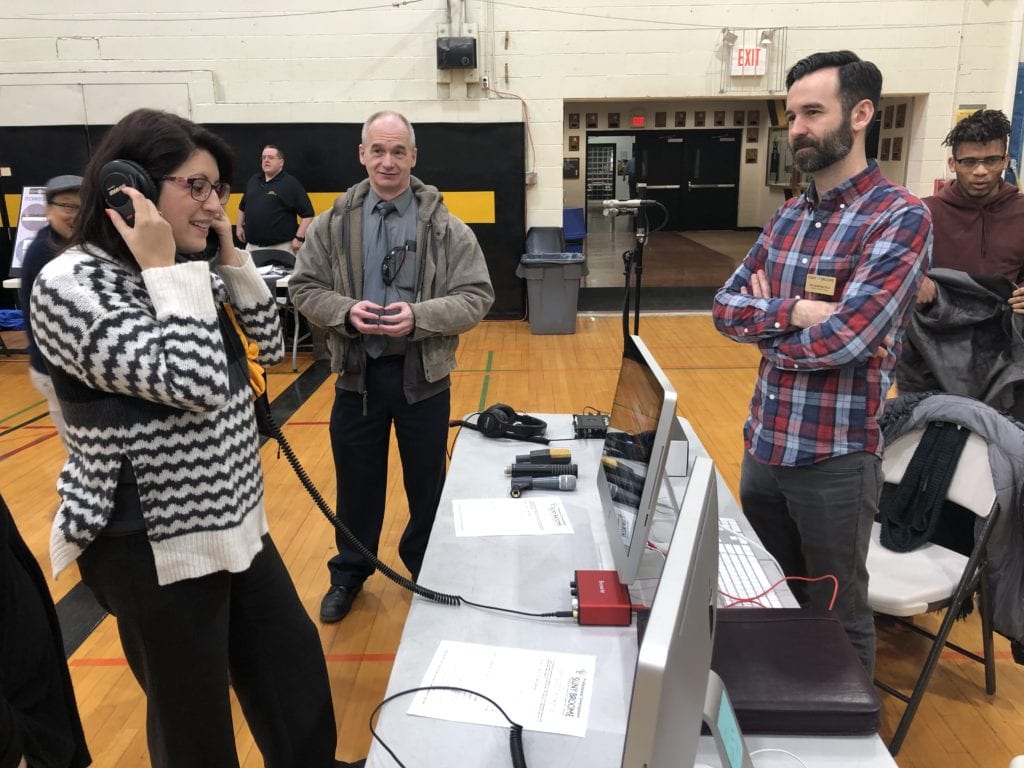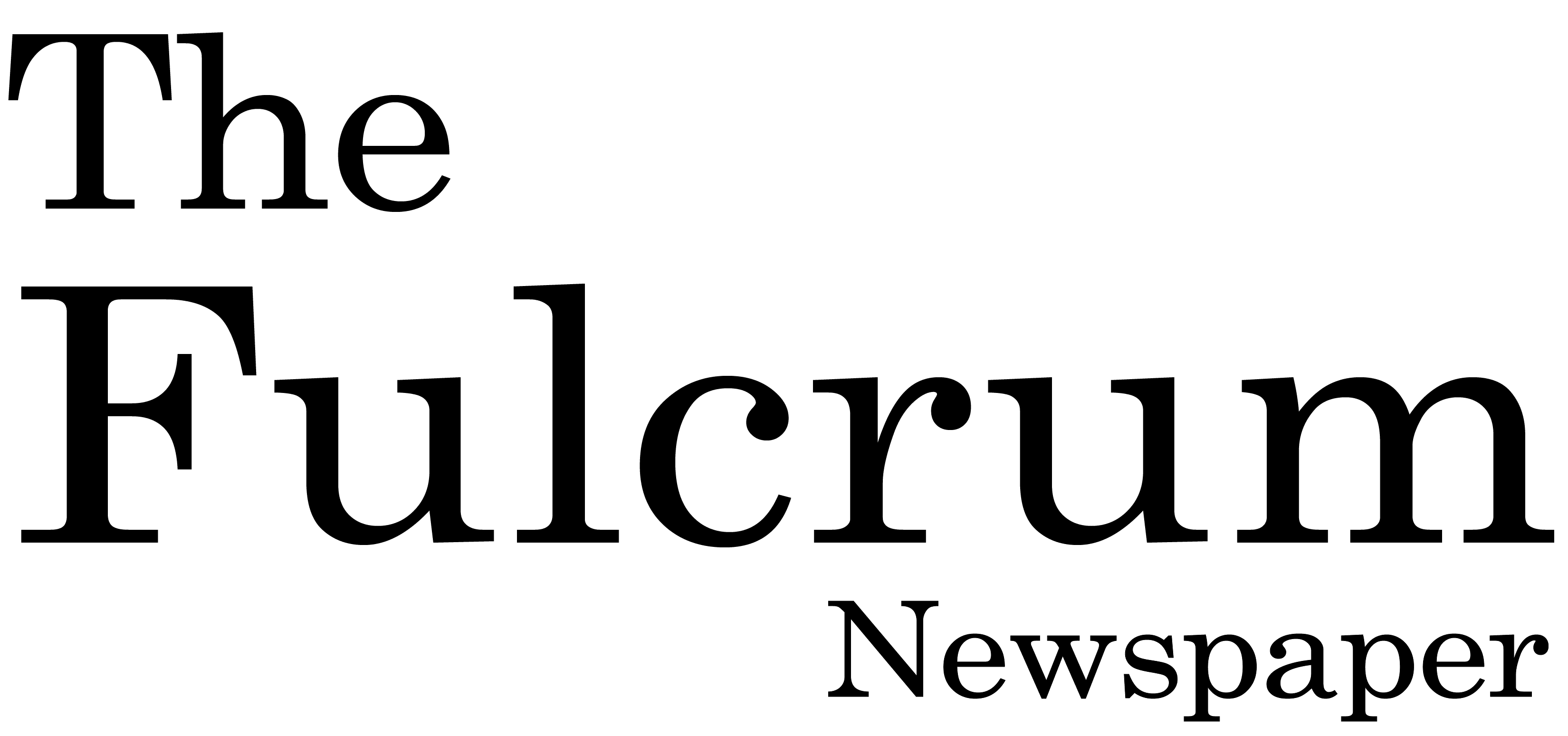
Technology has always been a cornerstone of SUNY Broome, from its founding after the end of World War II as one of the state’s five Institutes of Applied Arts and Sciences. As technology advanced – going from the punchcard-operated computers that took up entire rooms in days of yore, to today’s virtual reality equipment and modern networking – instruction has also kept pace.
Technology was the theme of the Spring 2020 Faculty Staff Assembly, a twice-yearly event that kicks off the new semester at SUNY Broome. It even infused the featured performance by Rashaad Wilson, a sound engineering student who also studies voice with instructor Peter Sicilian. Not only did he write the song “Aurora,” but also produced and recorded the complex soundscape that underlay its lead vocals, noted Music Coordinator Brenda Dawe.

Classes will begin at the new Culinary and Event Center in downtown Binghamton next week, as well as the new Oneonta Connection Center; both are connected via technology to the main campus. Oneonta doesn’t have a community college of its own, and the college is looking into expanding opportunities in that area, according to Vice President of Academic Affairs Penny Haynes.
During his address, SUNY Broome President Kevin E. Drumm reflected on emerging trends in higher education that will require changes in the years ahead.

About 75 percent of today’s undergraduates are non-traditional learners, which represents an opportunity for the college in shifting from the traditional market, he noted. The college’s relatively low administrative costs for an institution of its size and its strong Foundation support align with current trends, as well as discussions into micro-credentialing.
Other trends are mixed, or simply challenging. A move toward eliminating remedial courses from traditional college and instead putting them in specialized institutions could pose opportunities for community colleges, although the reemergence of for-profit institutions in mainstream education could be problematic. A more worrying trend on the large scale is the consolidation of colleges and the formation of a new generation of national universities, he said.

More locally, the immediate area faces a demographic decline in the number of young people; the graduating class in Broome County high schools is expected to be 10 percent smaller this June, prompting the college to both consider new populations for enrollment and increasing its retention efforts for current students.
“There’s lots to think about. We can’t solve today’s problems with yesterday’s logic,” he said. “I look forward to continuing the conversation with all of you in how we can do things in the future.”

Solving the red ball
Assistant Director of Technology Services Fermin Romero has been finding technological solutions on campus since 2013, and truly loves his job at SUNY Broome, he said. Ultimately, though, his role isn’t about the latest cool gadget or trying to troubleshoot a blue screen, but in furthering the college’s mission of teaching and learning.
He received the best training the country can offer in tight deadlines, high technology and high stakes in his previous life – as an avionics technician for the United States Air Force. Romero worked on F-15s, dual-engine jet fighters that cost between $35 million and $40 million each. (Fun fact: Professor Steven Call has experience on the other side – as a pilot and lieutenant colonel in the Air Force.)

When they’re on mission, Air Force fighter jets take off in a group to avoid enemy fire. With that in mind, maintenance issues – called a “red ball” when the aircrew is present – don’t just endanger an individual takeoff, but could jeopardize an entire mission. Romero recounted one of his red ball calls in Kuwait, for an F-15 with a non-operational radar antenna. After trying several different measures, he determined that he needed to swap out a power supply – not a typical issue. It worked, and the pilot was able to take off in under 10 minutes.
“Even though I wasn’t flying a jet, I contributed in that mission,” he said.

The college’s technology services have the same role: They solve problems so that the college’s mission of teaching and learning can be completed without scuttling the launch.
“We’re here to solve problems. It’s what we do. It’s what we love. It’s in our DNA,” he said.

Tables around the perimeter of the Baldwin Gym showcased many of ITS’ more recent projects, from virtual reality glasses that allowed viewers to navigate the college’s television studio, to items available through the Learning Assistance Department that make classes more accessible for students with disabilities. Creating a fiber connection with the downtown Culinary & Event Center was a particularly challenging initiative for ITS, Romero said.
Technology has gone beyond smartboards and projectors, and includes mobile workstations, networking that allows the college’s Collaborative Online International Learning initiative to connect with globally in real-time, a new e-sports club, sound engineering equipment in a specially outfitted music classroom, and a videoconferencing system that allows the college to offer classes remotely in the new Oneonta Connection Center.

ITS also has a lending program of hardware available to students, faculty and staff, and expanded its offerings from laptops to microphones, tablets and more. Future projects include a virtual reality lab for the Computer Science program, a long-awaited upgrade to the EMT/Paramedic program training ambulance and a technology showcase room that will allow the campus community to explore new technology – including items that didn’t make the cut.
In short, even if they’re not sitting in the cockpit, campus technologists are there to help the plane fly.
“Every one of us supports the same exact mission: that of teaching and learning,” Romero said.

